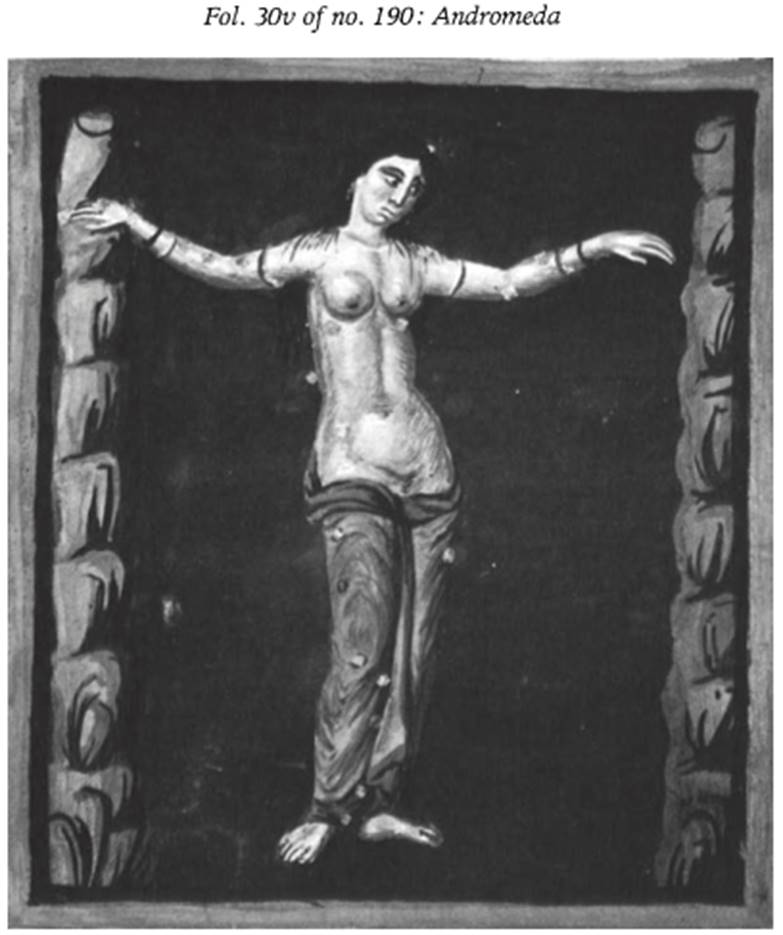Aratea. Lorraine, 2nd quarter 9th century. Parchment
One of the most famous works of the exact sciences in antiquity is the Phaenomena of Aratus of Soloi (fourth to third century b.c.), an astronomical treatise dealing with the locations and configurations of the stars. Aratus was not, in fact, an astronomer, but the court poet commissioned by Antigonos II Gonatas (about 320-239 b.c.) to versify the earlier treatise of Eudoxos of Knidos (fifth-fourth century b.c.). The so-called Aratea were in all likelihood illustrated with mythological figures for the constellations for the first time by Eratosthenes of Cyrene in the late third century B.C.

The strength of the sophisticated, Hellenistic style of the thirty-five, originally thirty-nine, miniatures of this Aratus suggests that the Carolingian painter had access to an illustrated exemplar dating to the fourth or fifth century a.d. It was during this period that the artistic potential of the codex was first exploited. In each of the simply framed, full-page miniatures, the monumental constellation image appears behind gold squares indicating the arrangement of the individual stars in the heavens. On fol. 30v is the superb representation of Andromeda, half-nude and chained to the rocks. The composition is a familiar one from ancient painting, lacking, however, the sea dragon and Perseus on whom she waits for her salvation. The reclining figure of Eridanus on fol. 68v also suggests, in its upward glance and gesture, an excerpt from a fuller ancient composition. Other constellation illustrations include the Capricornus of fol. 50v and the combined image of the Serpentarius standing on the back of the Scorpion on fol. 10v.
The elegant, fully assimilated classicizing style of this Aratus indicates more than just the close copying of a Late Antique period model. The text, barely more than captions to the illustrations, is probably the first example of a composite made from two different Latin translations, that of Germanicus Claudius Caesar (first century a.d.) and that of Avienus (late fourth or early fifth century). Two other manuscripts with classical texts have been attributed to the same Carolingian center of production. Lotharingia, associated with the court of the emperor Louis the Pious, was obviously of prime importance for the transmission of illustrated classical texts in the later Middle Ages. One is the Vatican Corpus agrimensorum Romanorum (Vat. Pal. lat. 564); and the other is the London Aratus (British Library, Harley cod. 647), which contains a third Latin translation, that of Cicero.
1573, bought by Jacobus Susius from a painter in Ghent; 1600, used by Hugo Grotius for the Syntagma Arateorum; seventeenth century, library of Queen Christina of Sweden; Isaac Vossius; Leiden Universiteitsbibliotheek. Bibliography: Thiele, 1898; Koehler and Miitherich, 1971, pp. 79-83, 108-116.
Date added: 2025-08-31; views: 92;
